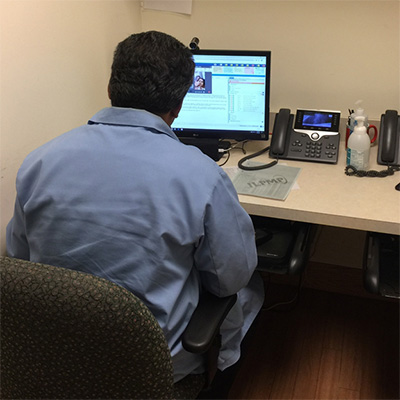When the COVID-19 outbreak occurred, the Rush Pain Center adapted quickly to a whole new way of providing care for its patients.
Sandeep Amin, MD, medical director of the pain center and chair of anesthesiology at Rush Oak Park Hospital, says the center conducted 340 virtual visits just in the month of April alone.
"The initial process was a bit clunky given that we did zero virtual visits before the pandemic," recalls Amin. "But since then, we have automated the process with virtual appointments being seamless and integrated. The patient gets a notification with a text with a link that they can connect with their doctor with a single click."
Making it safe for their patients and for themselves, the team provides a virtual waiting room where patients can wait in the comfort and shelter of their home to initiate the visit. They also made electronic prescribing an integral part of the response to facilitate direct transfer of the prescriptions to a patient’s individual pharmacy.
The feedback has been positive. "Most patients love the fact that they can connect with the doctor from the comfort and safety of their homes," says Amin. "Many patients would have to spend an entire day planning for the doctor visit. The travel time, having a family member to drive, waiting in the waiting room and travel back home were all eliminated."
Amin added that some patients required in-person office visits after a virtual visit, while others in severe discomfort needed an urgent procedure to help alleviate their pain. Overall, he’s been impressed with the work the staff has done to adapt to the situation.
"We spread out our staff members between various locations and reconfigured the waiting area and flow in the clinic for social distancing," says Amin. "We quickly provided PPE for staff and masking for patients on arrival to the office. On a given day we have maintained an ancillary staff at each of our University Pain Clinic locations, including Oak Park."
The entire process of adapting to the changes caused by the pandemic has been an eye-opener for Amin and his team.
"This is something none of us trained for—the learning curve was steep—but, at the same time I feel fortunate that we are able to connect with the patients and provide quality care needed," he says. "I also believe this was a good learning experience for the fellows/residents in training. This pandemic will have changed so many things that we did in the past.
"When this is over and we return to a ‘new normal,’ we will continue to have virtual visits as an integral part of patient care for the foreseeable future."
Learn more about the Rush Pain Center.

